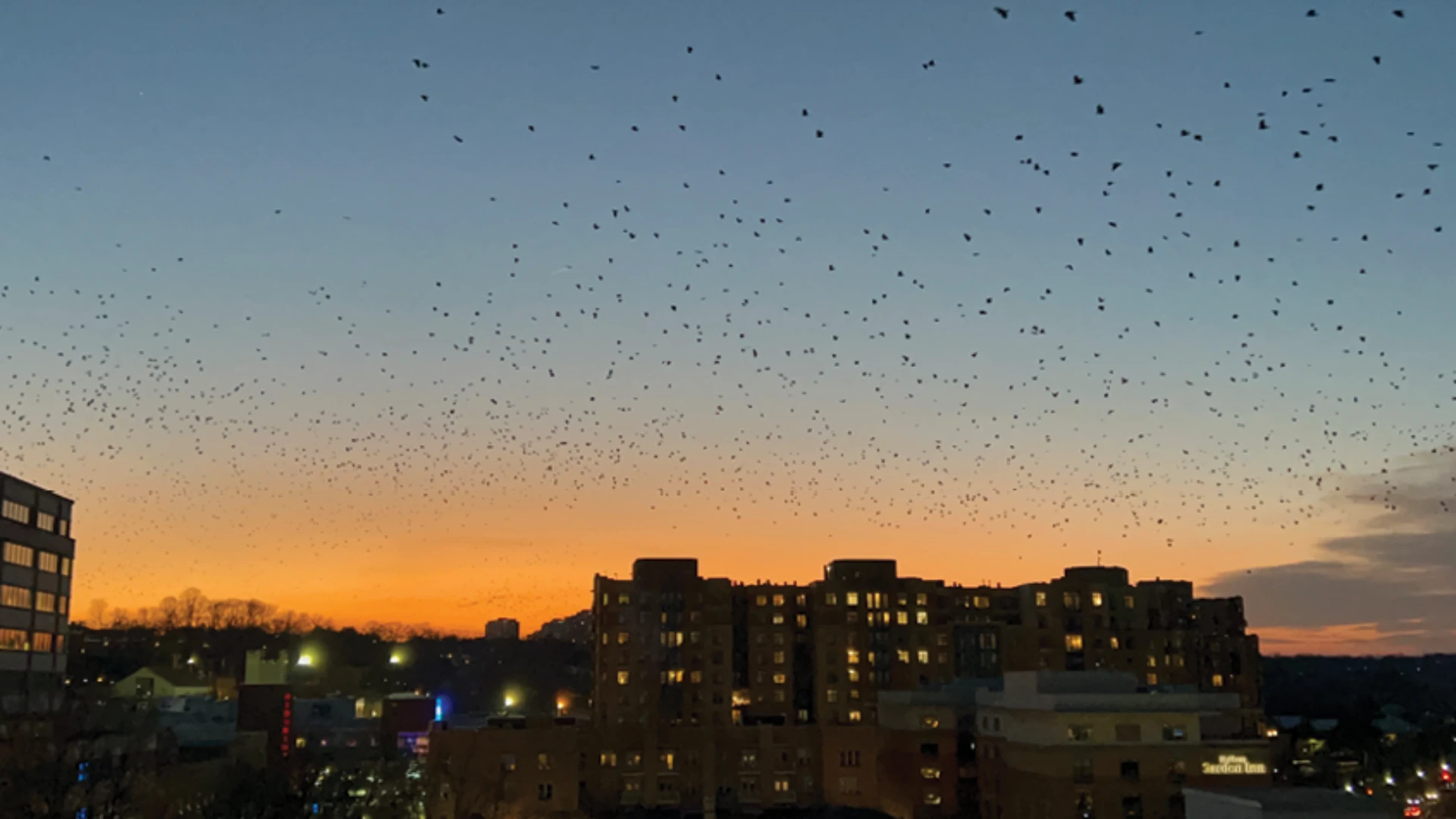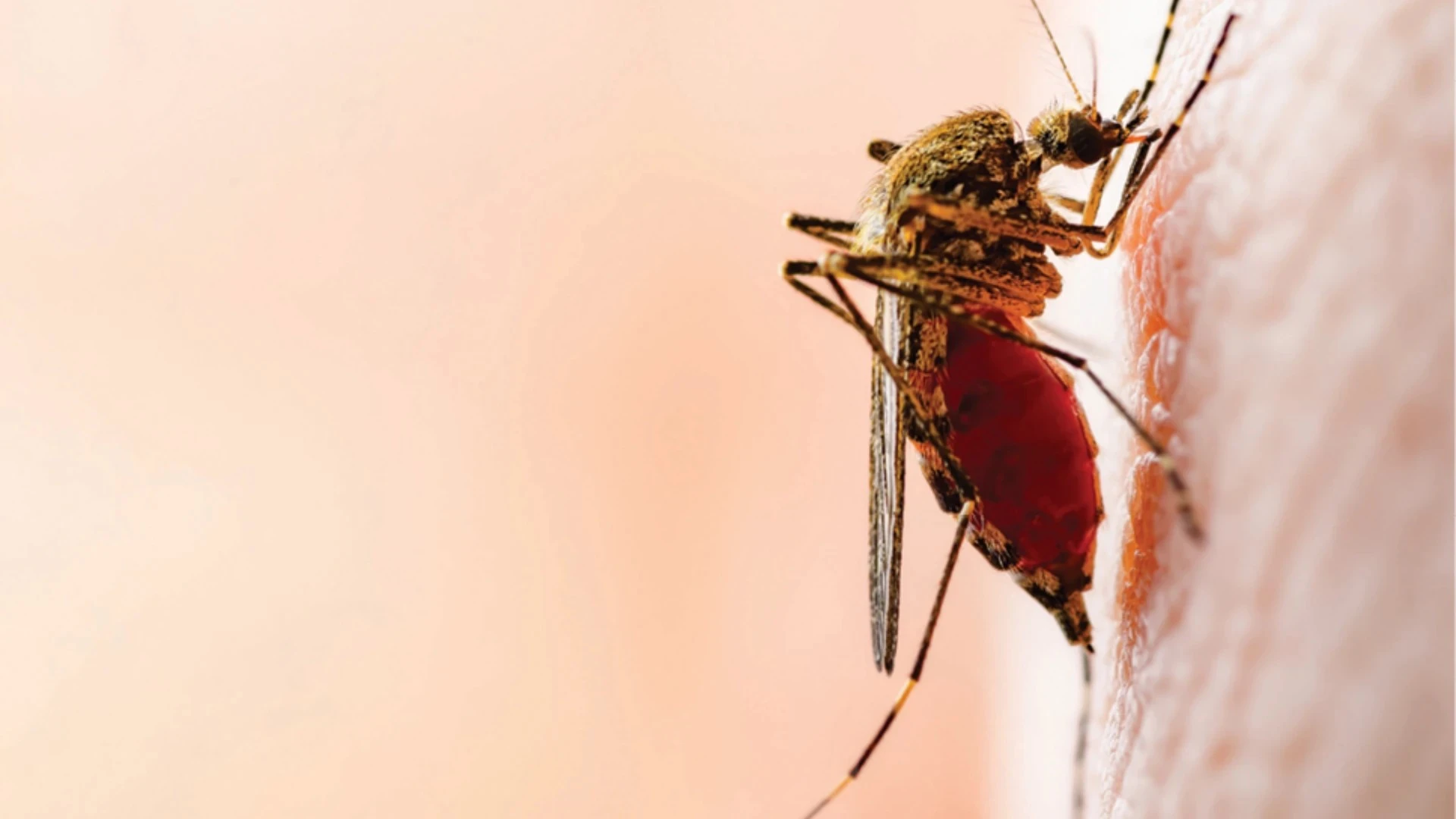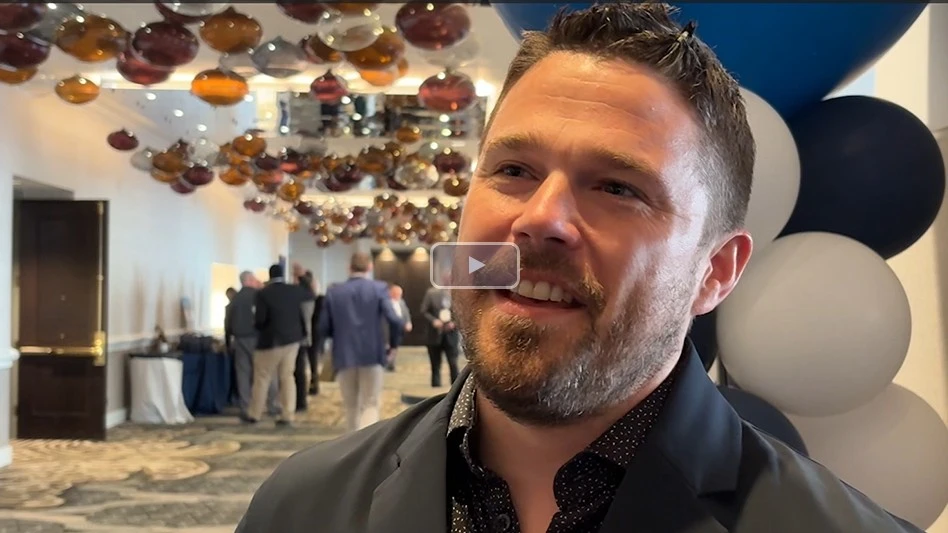Editor's note: Wisconsin Pest Control Association’s ‘Technically Speaking’ event drew more than 200 attendees from throughout Wisconsin and parts of Illinois for two days of education and industry networking. Mark Hendrickson submitted the following recap to PCT.
WPCA’s Technically Speaking conference drew more than 200 attendees from throughout Wisconsin and parts of Illinois for two days of education and industry networking. While CEUs are not required in Wisconsin, the conference offered 9 Illinois CEUs, and drew attendees from as far away as central Illinois to a tropical, winter getaway at the Kalahari Water Park and Resort in Wisconsin Dells.
The Feb. 11-12 event was an ambitious program that included a trade show where attendees interacted with better than two dozen exhibitors, learning about new products and services. The conference also featured an impressive array of 10 quality, knowledgeable speakers. Among them, Nancy C. Hinkle, PhD, a professor of entomology from the University of Georgia, who presented on delusory parasitosis. Hinkle’s session on “invisible bugs” clearly resonated with attendees as it generated much discussion and nearly every attendee had experienced a customer with this condition.
Hinkle’s presentation, “Invisible Bugs are the Bane of Pest Management Professionals”, described delusory parasitosis, also known as Ekbom Syndrome. Named for the Swedish neurologist K.A. Ekbom, the syndrome is a condition in which an individual considers him- or herself to be infested with invisible bugs. “It’s a mental condition and there is little we can do about it. That’s the frustrating part,” Hinkle said.
Hinkle advised her audience that people with the condition are desperate and want help. “Most of your customers do not know a lot about insects. They may know some about flies, mosquitoes or cockroaches. They are not conversant in what you do and why you do it,” she said. Consumers with Ekbom Syndrome will likely blame the condition on spider bites, bed bugs, scabies, chiggers, springtails, or the mysterious no-see-um.
According to Hinkle, more than a quarter million people in the U.S. may be affected with delusory parasitosis. “It is not unusual that you may get a call about this,” she said. Furthermore, Hinkle explained that the condition often affects people in pairs or groups such as an entire family or work group in an office, for example. “This can put you in an awkward position as they say, ‘with all of us affected, it must be real.’”
From questions and real case studies raised by attendees, it’s clear that many, if not all, pest management professionals have confronted a potential customer with this condition.
“There must be a company decision about how your company handles these situations,” Hinkle said. “Your people went into this business to solve problems and to help people. But, when they run into a situation like this, they may not have the training or background to handle it appropriately.”
Through her research, Hinkle has tried to learn more about peoples’ behavior patterns and medical-psycho-social histories. “I am an entomologist, not a psychiatrist, but we are trying to learn something about people with this condition,” she said. As a result, Hinkle stated the following common attributes of those with the condition:
- Most common in the elderly
- Females mostly affected
- Recently quit job
- Burn or destroy furniture, feeling it is infested
- Obsessive laundering
- Abandoned home
- Repeated pesticide misuse
- Use of home remedies
She said delusional parasitosis a medical-psychiatric issue that can be treated. “The medical profession needs to recognize, diagnose the condition and make recommendations for care,” she added.
Other speakers at the two-day WPCA event included:
Jerome Goddard, PhD, Associate Professor of Entomology at Mississippi State University
Goddard noted that there are four pillars of public health that include clean water, waste water disposal, vaccinations, and pest control. “Many diseases, but not all, have an insect component, so you have to be able to kill the bugs, the bearers. You, as pest control professionals, are serving a public health function,” he explained. “Be proud of what you do.”
His session, sponsored by Univar, focused on some extent on bed bug biology and related health effects. Goddard noted that there are 91 species of bed bugs, and that they will increase in size up to 200% when feeding. Aside from a general description of bed bugs, Goddard provided background details on five ways that bed bugs affect human health. These include:
- Psychological trauma - some studies have reported people may have issues with conditions that include insomnia and post traumatic stress disorder
- Cutaneous reactions, nuisance biting – reactions range from nothing to significant
- Allergic reactions from bed bug bites – not common
- Anemia from bed bug bites
- Potential for disease transmission - mechanical or biological
Goddard reported that several studies have investigated disease transmission without any sound evidence of it occurring. “At this time, there is no evidence supporting a significant amount of disease transmission by bed bugs,” he said.
Richard D. Kramer, PhD, Innovative Pest Management, Inc.
Kramer provided a thorough discussion on the history, development, and use of insect growth regulators (IGRs). Kramer noted that Zoecon pioneered the development of IGRs, based on the work of founder Carl Dejerassi, co-inventor of the human birth control pill.
Kramer noted that there are three types of IGRs: juvenile hormone analogs, juvenile hormone mimics, and chitin synthesis inhibitors. In a general sense, IGRs interfere with the development of certain insects, preventing them from becoming adults.
One advantage of IGR use, he explained, is that they can be used in very sensitive locations such as hospitals, around computers, in schools, LEED buildings and the like. They are effective but are known for slow activity and one must wait until the existing population dies of natural causes, and this requires some customer education.
According to Kramer, “the best way to use IGRs is in a combined treatment with insecticides as it enhances the effectiveness of both products.” The combination provides a one-two punch for pest reduction. “Adding IGR to a conventional toxicant provides for fast reduction of pests, keeps missed individuals from reproducing, and keeps invaders from developing a new infestation,” he explained.
Kramer detailed the specific effectiveness of IGRs in relation to the following pests:
• Fleas
- Prevents immature fleas from pupating
- Prevents re-infestation for 7 months
- Ovicidal, prevents egg hatch on treated animals for 63 days
• Fire ants
- Sterilizes the queens
- Suppresses the mound longer than other compounds; prevents relocation
• Mosquitoes
- Prevents pupae from becoming adults
- Labeled for all bodies of water, including pet water dishes and troughs
• Cockroaches
- Causes incomplete metamorphosis to adult (twisted wings, malformed genitalia)
- Causes egg bearing females to seek food, thus improving bait programs
• Drain Flies
- Gentrol (hydroprene) can be applied directly into drains and breeding sites
- Unique ability to bond to organic matter in drains where flies breed
- Prevents pupae from emerging as adults
• Bed Bugs
- Affects reproduction by causing morphological changes as they molt to adults
- Causes mortality as nymphs molt to adults
In conclusion, Kramer noted that IGRs offer many advantages including the following:
- Effective long term pest control
- Ideal for sensitive areas
- Target specific pests
- Can be tank mixed with insecticides
- Helps prevent re-infestations
- Offer a broad spectrum of activity, and long residual
- Reduces callbacks.
Nicky Gallagher, PhD, Technical Manager, Syngenta
Gallagher opened by asking attendees if they felt like superheroes. “You should,” she explained. “Your job is to go out there and protect property, health, and make your customers’ lives safer. That’s not a small thing, it’s a big deal.”
She went on to describe pyrethroid regulatory actions from the past, the background to new regulations, the new pyrethroid label restrictions, and what it means to daily operations for PCOs. According to Gallagher, “the purpose of the label changes is to reduce the potential for runoff and other off-target movement of pyrethroids.” She outlined non-pyrethroid options that include oxadiazines, neonicotinoids, pyrethrins, phenylpyrazoles, pyrroles, and IGRs, and suggested that PCOs stay current by visiting this web site: www.pwg2pmp.com
Thomas Parker, PhD, Pest Control Services, Inc.
Parker told attendees that prevention is the best approach to pest management. “We should not wait until something is causing an uproar. We need to prevent that from happening, and go to the source of what the infestation is happening,” he explained.
In considering preventive pest management strategies, Parker noted that the building envelope, and exterior lighting are major areas to assess. For the building envelope, Parker said, “If you’re going to call yourself a pest management professional, you have to do an exterior inspection. Openings in the building envelope can be a problem where mice and all sorts of insects walk right in.”
In terms of exterior lighting, the type of light that a commercial account has could be too inviting to insects. “I suggest that you ask your accounts to use sodium vapor lights that are affixed to the buildings. If your commercial accounts use giant mercury vapor lights, they will attract everything under the sun.” According to Parker, insects will hit the lights and drop, and now they’re around the perimeter of the building, and shortly thereafter you have insects inside the building.
Brad Temple, Senior Attorney, West Bend Insurance
Temple spoke on the common misunderstandings and pitfalls of business insurance. Temple, who was involved in West Bend’s entry into the pest control insurance market a decade ago, told attendees that “cheaper isn’t necessarily better.” According to Temple, a low-cost provider could mean less coverage, less service, and a less financially sound insurer.
Balance in what you pay and the coverage you receive are key ingredients in searching for business insurance, he says. “Specialized coverage is important. Find insurers that have a niche. They will have experience and have done the research to learn what your risks and exposures are, and they will help you find the right balance so you can compare prices, coverage and services,” he explains.
Regardless of where you buy your insurance, Temple advises business owners to read the policy. “When you perform pest control services, you use a contract with a lot of words in it. You expect your customers to read the contract and abide by those terms. I suggest you do the same with your insurance policy.” He suggests going over the policy with your agent and ask questions and focus on the exclusions — the list of items that are excluded from coverage.
Dan Skoczylas, CLS Background Investigations
Regarding background checks, Skoczylas told attendees that “if it’s promoted as ‘instant online’, that’s a bunch of baloney. It’s like going into a house infested with mice and yelling ‘get out’. That isn’t going to work,” he explained.
Whether you conduct background checks yourself, or hire an outside firm for assistance he said comprehensive background checks are important for protecting your business reputation, for workplace safety, employee retention, and liability.
Skoczylas also said that running a background check does not have to entail a lot of expense. He says that the average cost for such a service in the pest control industry, through his firm, is $38. And, he says, it’s important to be able to tell your employees and customers that you care. “We check every employee who walks through this door to ensure that they do not have a criminal history that jeopardizes you and your family.”
Matt Sunseri and Mike Murray, Wisconsin Department of Agriculture, Trade, and Consumer Protection (WDATCP)
Sunseri and Murray spoke about schools, IPM, and pesticide regulations. Sunseri, a pesticide specialist, noted that schools are sensitive accounts because of the susceptibility of children. Children are susceptible, he explained, because “their bodies are still developing and they are not able to de-toxify chemicals as adults can. Children may also have some behaviors that increase their exposure, such as hand-to-mouth activities.”
IPM is a common sense approach to pest management that makes use of all available strategies. “It emphasizes monitoring to collect and evaluate information about pests, building conditions, and peoples’ concerns.” According to Sunseri, IPM focuses on pest prevention and uses several methods of control such as sanitation, building maintenance and pest exclusion, biological control and chemical use only as needed.
In Wisconsin, there is no regulatory requirement to follow IPM. Rather, there is a recommended voluntary program. According to Murray, a WDATCP pesticide certification and licensing specialist, “There is no one approved IPM program that fits all schools. The program is highly dependent on the needs of each school,” he explained.
Murray said that most problems with pesticide use in schools relates to four factors:
- Not following pesticide label directions
- Posting not done or improperly done
- An applicator not certified, or not certified in the correct category
- Incomplete or inaccurate application records
He further noted that exposure incidents occur most often when pesticides are applied when people were nearby, when applicators were accidently exposed, and there was drift from a nearby yard or field. “Parents can explode the issue,” he added.
Phil Pellitteri, Entomologist, UW Insect Diagnostic Laboratory
Pellitteri has had a long and distinguished career directing the Insect Diagnostic Lab at UW-Madison. His presentation recapped the various calls and samples he received in the past year at the Lab and what he expects to see in the year ahead.
Pellitteri is retiring at the end of this month, and he received a standing ovation from attendees for his commitment to education and professional advancement in pest control. In his closing remarks to the group, he noted how the industry has advanced professionally: “I began running the lab in the late 1970s. How this industry has evolved since then and how the level of professionalism has risen is just extraordinary. It has been enjoyable to be a part of that.”
The author is president of the Winagra Group and can be contacted at wingra1@gmail.com.
Latest from Pest Control Technology
- OvoControl Now Available in Chile
- Envu Announces Savings Programs for Pest Management Professionals
- Follow the Trail
- Carpenter Ants: Understanding the Bothersome Burrowers
- Massey Services Acquires Insight Pest Solutions of San Antonio
- Target Specialty Products Expands Sales Leadership Team
- Mosquito Joe Promotes David Price to Vice President of Strategic Growth
- Abell Pest Control Recognized as One of Canada’s Best Workplaces in 2025





